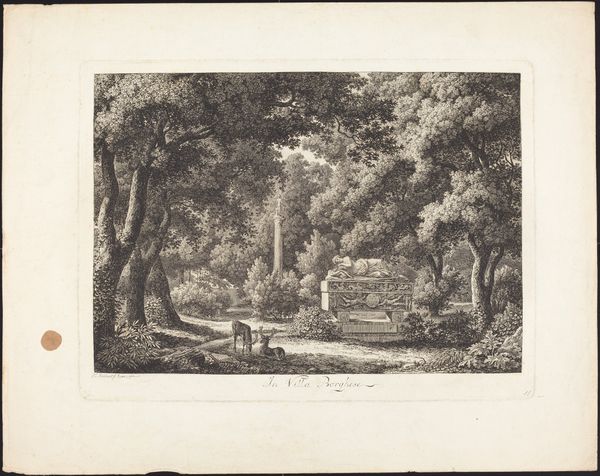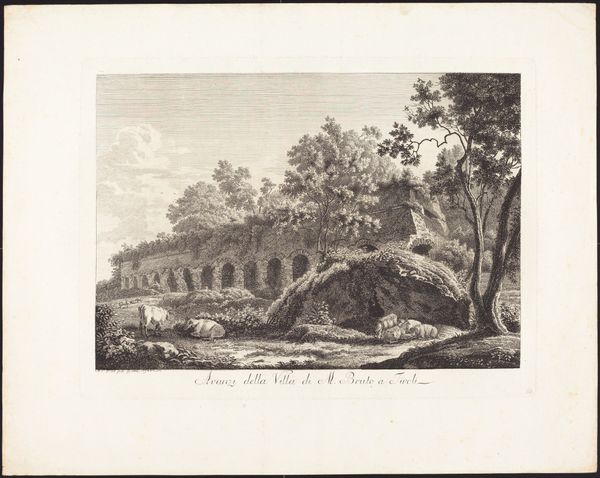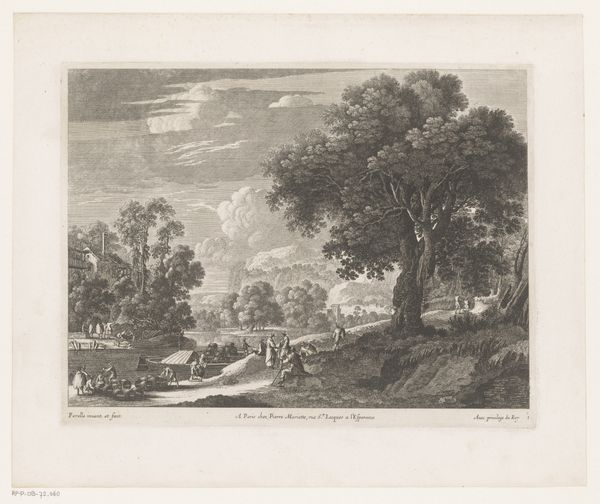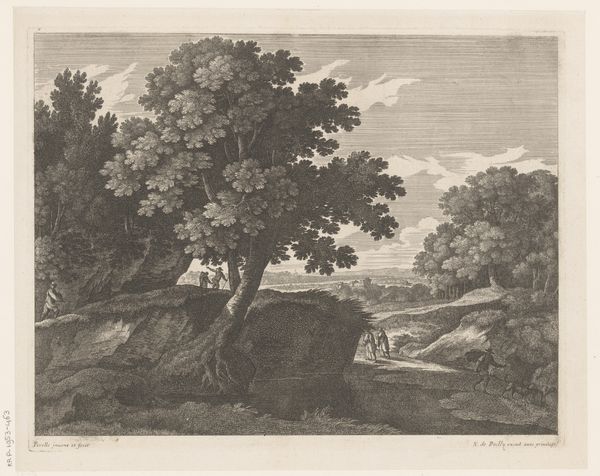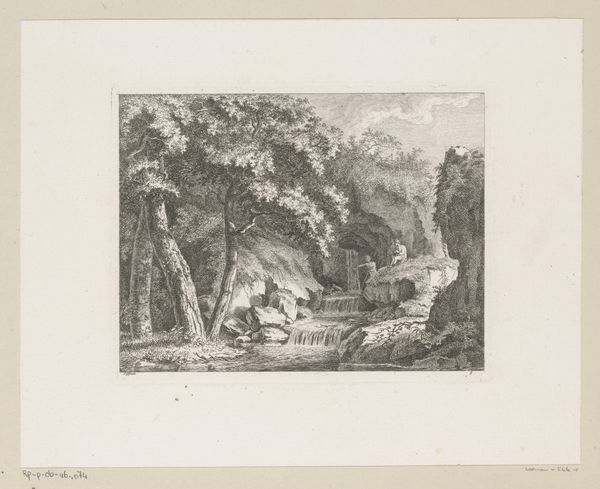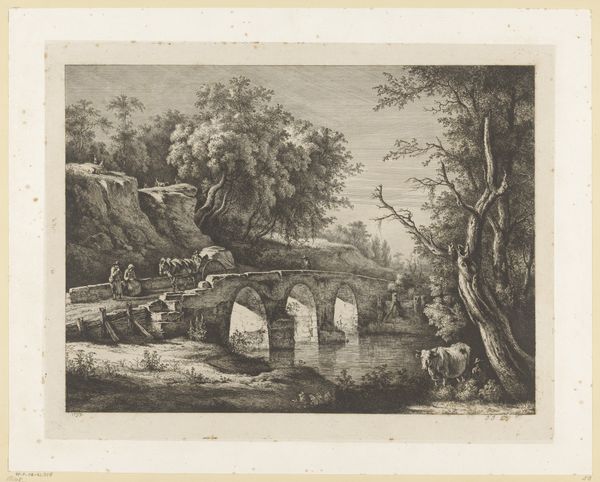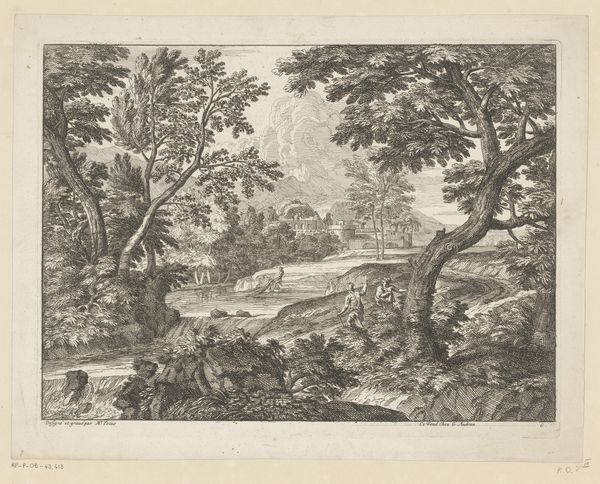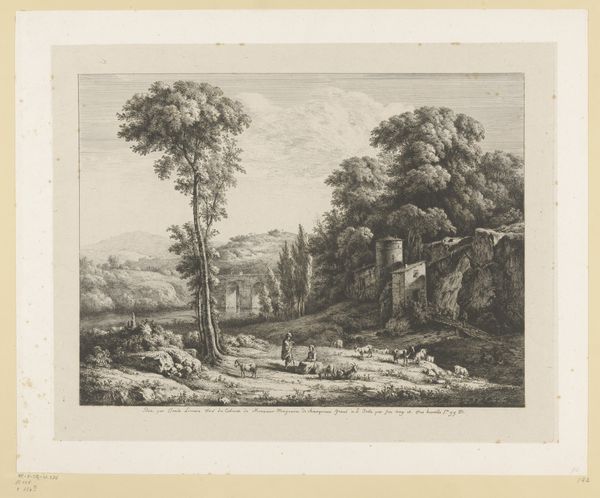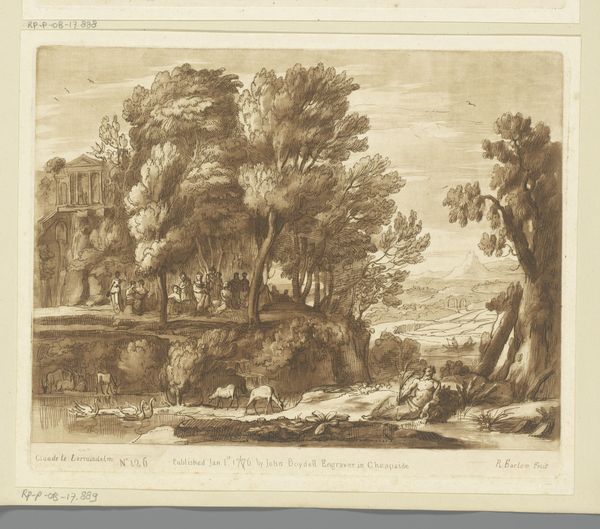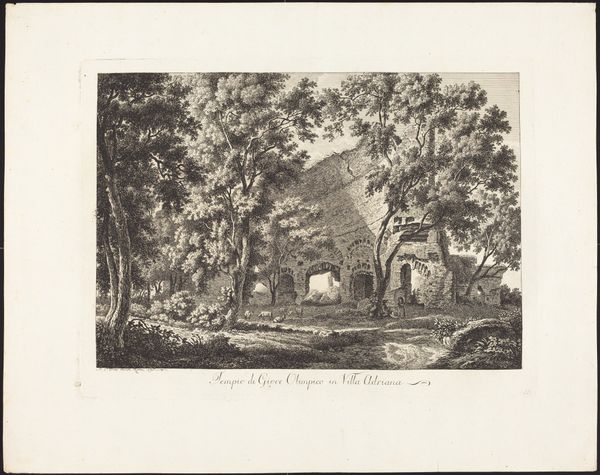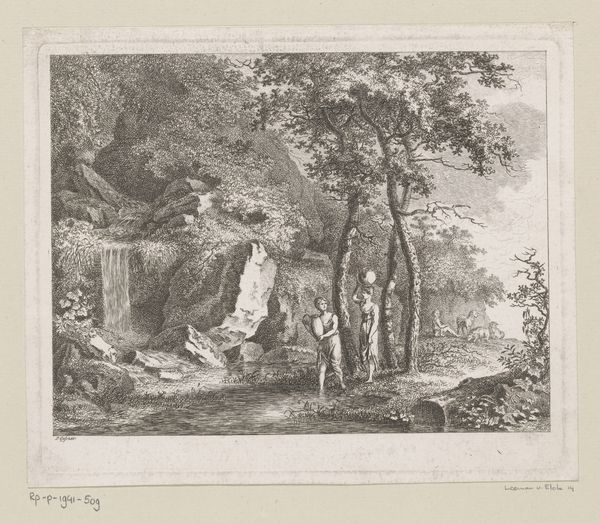
Ruderi essistenti a Tivoli del Piano inferiore della villa di Cassio 1798
0:00
0:00
drawing, print, etching, ink, engraving
#
pen and ink
#
drawing
#
neoclacissism
#
ink drawing
#
pen drawing
# print
#
etching
#
landscape
#
ink
#
engraving
Dimensions: plate: 28.1 x 38 cm (11 1/16 x 14 15/16 in.) sheet: 39.2 x 49.2 cm (15 7/16 x 19 3/8 in.)
Copyright: National Gallery of Art: CC0 1.0
Albert Christoph Dies created this etching of the ruins at Tivoli, Italy, sometime in the late 18th or early 19th century. It presents a view of the lower level of what was once the Villa of Cassius. Dies was a German artist working in Italy at a time when the classical past was exerting a powerful hold on the European imagination. Grand Tour travelers flocked to Italy to experience its ancient monuments firsthand. The Villa of Cassius, like other Roman ruins, became a popular subject for artists catering to this market. This image creates meaning through its visual codes, referencing Italy's classical heritage. The etching served as a kind of souvenir and also fueled the burgeoning field of archeology. As historians, we can examine how the rediscovery of the classical world shaped art production, the art market, and the cultural values of the time. Museum archives, travel journals, and archeological reports all help us understand art's relationship to social and institutional contexts.
Comments
No comments
Be the first to comment and join the conversation on the ultimate creative platform.

